Are High Schools Preparing Students for College?
High school is where adolescents—whose brains are still growing rapidly—should develop both academically and socially. They need to master state standards and develop the critical thinking skills needed to drive their learning and express what they’ve already learned. These are the abilities and strengths they’ll need in college and beyond.
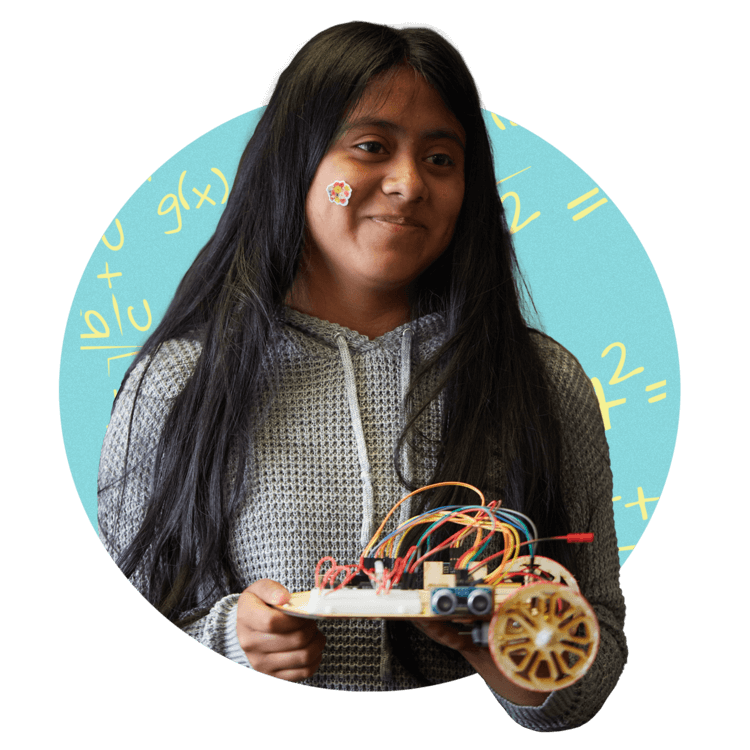
Does High School Prepare Students for College?
We polled our community of students, teachers, parents, and employers from across the country about whether high school prepares students for success in college. More than 300 people responded. Of those respondents, 60 percent of students believe high schools are not preparing students for college. For non-students—a mix of educators, parents, and other adults—that percentage was even higher: 84 percent.
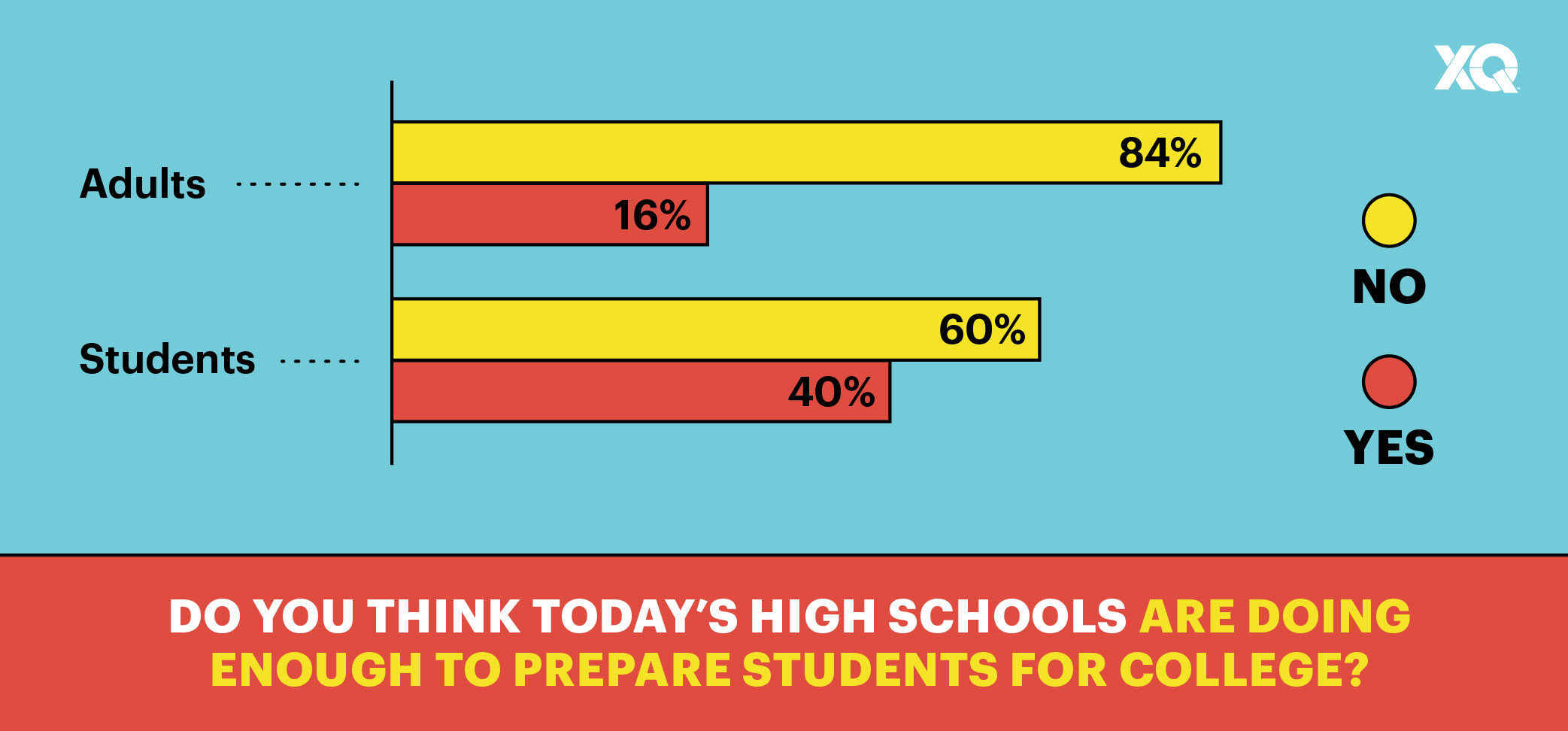
These results come at a time when attitudes and decisions about college, in general, are shifting. A 2020 report from the National Center for Education Statistics found a third of all high school graduates are not going straight to a two- or four-year college, a figure that appears to be on the rise due to the COVID pandemic and higher costs of tuition. At the same time, an increasing number of Americans are questioning the value of a college education in the first place. The 74 reported on a survey from early 2023 in which respondents ranked preparation for college or university near the bottom of their priorities for schools: 47th out of 57 overall. We also know that many students withdraw from college if they aren’t well prepared and can’t pass remediation courses. For all of these reasons, some students may conclude the benefits of college are not worth the cost.
In this context, it’s clear: we need to rethink college preparation for today’s generation of high school students. XQ defines future readiness through our Learner Outcomes: concrete, relevant knowledge and skills that students can apply to succeed in a 21st-century context. These outcomes include:
But high schools must create the right environment and learning experiences for students to achieve these outcomes. That’s why XQ’s Design Principles are critical. These six research-based principles are:
We know these principles work and many experts agree. Using the results from our audience poll, we launched a series of conversations with various education experts about how high schools can better prepare students with the knowledge and skills to enter college and succeed once enrolled.
What percent of high school students are prepared for college?
When we asked students in our audience poll to identify the number one way high school is preparing them for college, this was their top response: providing the academically rigorous coursework needed to succeed in college.
However, that confidence doesn’t always match up with the data. The average scores in mathematics and science subjects were all below the ACT College Readiness Benchmarks for students set to graduate high school in 2023. These are the test scores required for students to have a high probability of success in credit-bearing first-year college courses. The average Composite score on the ACT test fell to 19.5 for the class of 2023, a decline of 0.3 points from 2022, according to data from the ACT. It was the sixth consecutive year of declines in average scores.
With those declines in mind, it’s not so surprising that a Hechinger Report investigation of 44 states found that a vast majority of public two- and four-year colleges report enrolling students who are not ready for college-level work. These findings show up in the high number of students who have to enroll in remediation courses after entering college. The National Center for Education Statistics reported that up to 65 percent of community college students take at least one remedial course. These remedial courses increase the cost of college, adding to the financial burden students and families face.


“We have high schools that are giving us education out of context. There’s a lot missing from what we would view to be a comprehensive high school education in the current offerings. And frankly, it’s very disappointing because when you end up graduating from high school, you have all of these expectations that you’re ready to launch. And what we’re getting out of high school today is a lack—not just a lack of preparation in terms of math skills and reading skills, but really, not even the fundamentals of developing the skills that we need to be ready for the jobs of the future or to take a college level course.”
– Keri Rodrigues, president of the National Parents Union.
Rodrigues pointed to the large number of students taking remedial courses before they can take college-level classes. So why is there such a mismatch between how students in our poll rate their preparedness and what the data show about remediation courses? Possibly because, as Rodrigues noted, the courses students take in high school don’t focus on the skills and knowledge they’ll need to succeed in college. As a result, students can “succeed” in high school while missing out on what they’ll need for success in the future.
There are data to support this theory. In the report Meandering Toward Graduation: Transcript Outcomes of High School Graduates, The Education Trust showed that high school transcripts are often a poor measure of what students have actually learned. Students may pass their classes, but they lack the mastery they’ll need to tackle complex, college-level work. A report from the Brookings Institution investigated why this might be the case. It found high schools often fail to prioritize teaching the critical thinking skills students will need in college—skills like how to analyze texts or craft persuasive arguments.
These problems begin prior to high school, of course. Scores on the National Assessment of Educational Progress (NAEP) Long Term Trend assessment for 13-year-olds in the 2022-23 school year showed math and reading scores fell to their lowest levels since 1990 and 1995, respectively. And fewer 8th-graders were proficient in reading and math compared to 2019. The average 8th-grade mathematics score decreased by 8 points and was lower than all previous assessment years going back to 2003. NAEP scores also fell in 8th grade history and civics compared to 2018. Education experts believe these downward trends reflect the impact of remote learning in the pandemic as well as state education policies, local poverty levels, and a declining focus on history. These data points indicate these students will not be ready for high school level work, which then puts them at a disadvantage for college readiness.

“They’re not effectively teaching kids to write at the level that they’re going to have to write when they go to college, which means to read analytically and then to prepare some kind of coherent summary of what they thought about what they read, and get it on paper. I think that’s one of the critical skills that colleges demand, and too many students are not prepared.”
– Norm Fruchter
Fruchter, who died in late 2022, was a longtime advocate for education equity in New York City. He worked on high school improvement as a founder of the Institute for Education and Social Policy at New York University, and the Center for Education and Community at the Annenberg Institute for School Reform at Brown University in Providence, Rhode Island. Reflecting on his experience working in schools, Fruchter emphasized the importance of college in setting students on a path towards good jobs, especially students from underserved backgrounds. But he also told us that high schools need to do more to prepare students for the kinds of work they’ll experience in college.
“I don’t think enough work is being done at the high school level in terms of real collaboration,” he explained. “The experience of working together to shape a project is one that does so much for critical thinking that the spillover effects are going to be really, really important.”
Fruchter and Rodrigues’s emphasis on prioritizing relevant, college-ready skills aligns with a competency-based approach to learning. In competency-based learning, students progress through material based on whether or not they’ve mastered a core set of competencies rather than more artificial measures like seat time. Schools can design competencies to encompass both academic and life skills. The Aurora Institute noted there are many flexible alternatives like these to traditional seat time.
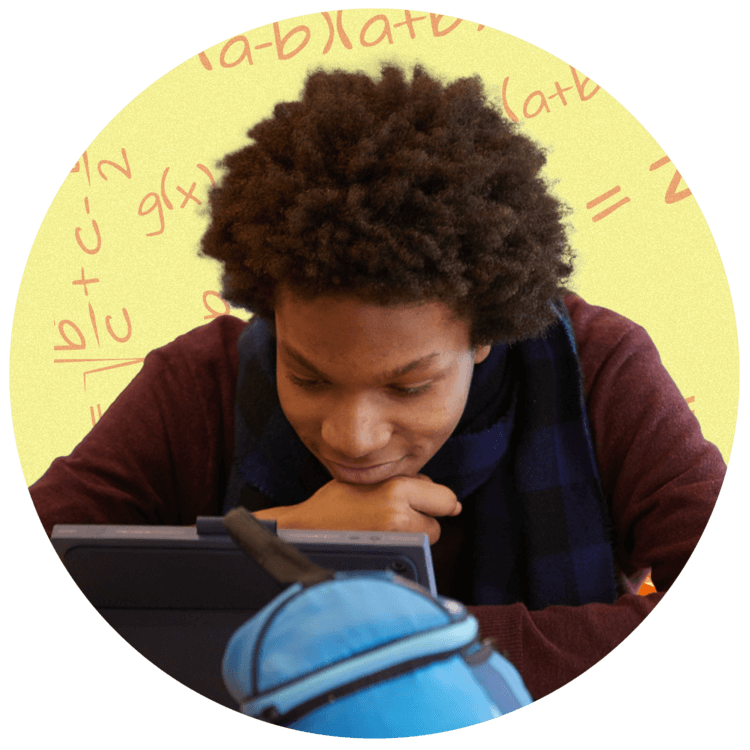
A Competency-Based Approach to College Preparation
Crosstown High, an XQ school in Memphis, Tennessee, designs learning around competencies. For example, in 2020, 10th-grade students conducted a semester-long study of dystopias that culminated in designing dystopias of their own. Students read the book “Station Eleven” by Emily St. John Mandel in their English class and wrote both a constitution for their dystopia and a research paper analyzing what resources (such as water, food, and air) will look like in their society—exemplifying the kind of analytical thinking Fruchter described.
The New York Performance Standards Consortium offers more examples of how schools can teach students the skills they’ll need for college through a competency-based approach. The Consortium network includes 38 schools in New York City, Rochester, and Ithaca, New York that educate more than 30,000 K-12 students. These schools have a strong focus on equity. In New York City, they serve a greater-than-citywide proportion of English learners, students with disabilities, youth living in temporary housing, Latino students, and students in economic need.
Schools in the Consortium shape learning around rubrics that identify the high-level thinking skills students will need to succeed in college and careers. Rather than traditional testing, students show their learning through performance-based assessment tasks , including “analytic essays on literature, social studies research papers, lab reports or original science experiments or engineering designs, and narratives of the process and solution of mathematical problem-solving.”
The success of this approach is confirmed by data. A 2020 study from the learning policy Institute found that Consortium students did well at the City University of New York (CUNY), even though their SAT scores were below the minimum cutoff score needed for admission. The researchers attributed the students’ preparedness in part to the consortium’s more project-based approach to learning.
Similarly, in a survey of more than 1700 students who graduated from XQ’s first 16 high schools in 2022, more than 80 percent said they felt prepared for college. Like Crosstown, most XQ schools emphasize project-based learning and competencies. These 2022 graduates were also more likely than the national average to say they planned to attend a two- or four-year college.
Another way schools and districts can ensure all students are prepared for college is by taking a deep look at their data to determine which students are served better than others. In 2022, Rhode Island enacted new graduation standards after finding nearly half of its graduates weren’t meeting the minimum criteria for entry into the state’s public colleges and universities. The state’s education department partnered with XQ to review thousands of student transcripts using XQ’s Educational Opportunity Audit. Together, they discovered boys were less likely to complete the college preparatory course sequence than girls, while Black and Latino students were less likely than white and Asian students, and low-income students and English learners were less likely than their peers. Along with these data points, Rhode Island Education Commissioner Angélica Infante-Green said listening to students, families, and teachers helped the state revise its standards.
What Can High Schools Do Better to Prepare Students for College?
We asked students: what is the number one thing educators or school administrators could do to better prepare you for college? The top response was additional real-life training, like time management, public speaking, and navigating self-care and mental health. Non-student respondents also identified these skills as the top priority.
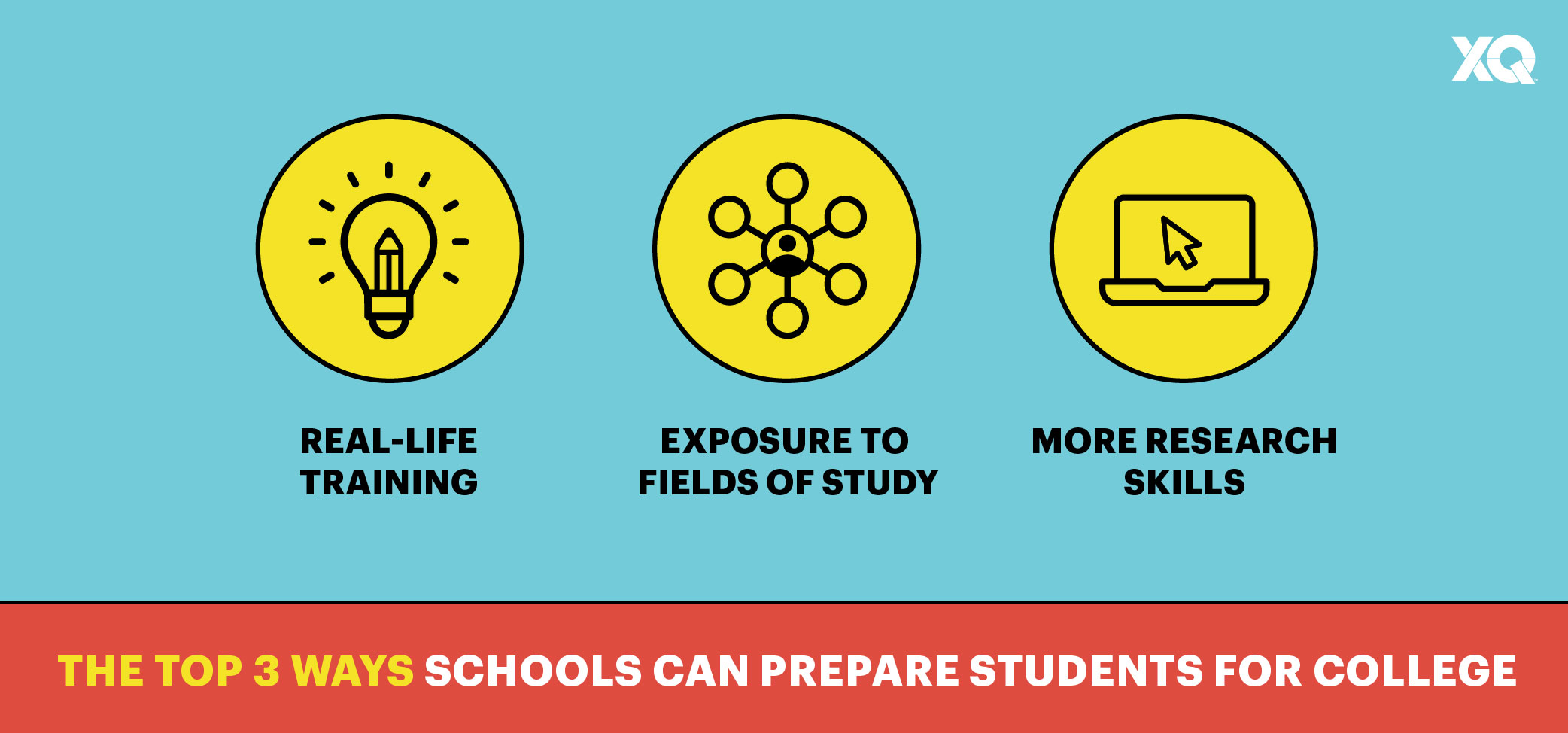
Crucially, these skills prepare students not just for college but for a wide range of future options. They are just as relevant and helpful for students who choose to go directly into the workforce.

“The big question here is not to look down on anyone that does not have the college degree because we should honor the plumber as we do the PhD.”
– Dan Domenech, former executive director of the American Association of School Administrators.
Schools can build these skills through project-based learning (PBL)—working on authentic, real-world challenges that can last as long as a whole semester like they do at Crosstown High. With PBL, students learn the kind of life skills our respondents identified alongside more academic skills. Project-based learning also facilitates the XQ design principle Youth Voice and Choice, as students have to make decisions and solve problems as they occur in a real-world setting rather than following a pre-set curriculum. In this way, project-based learning sets students up for the more independent, self-driven environment of college.
This style of learning takes center stage at Iowa BIG, an XQ school in Cedar Rapids, Iowa. At Iowa BIG, students take on projects they design and others proposed by local businesses, nonprofits, and government partners. For example, 2019 graduate Caitie led a project proposed by Camp Courageous to provide people with disabilities with a safe outdoor space to enjoy nature. Caitie explained, “Our student team researched ADA compliance, designed the spaces, pitched our ideas, raised over $17,000, and even incorporated solar technology. Campers can now enjoy an ADA-compliant concrete path and raised garden beds containing fruit-bearing perennials to pick, eat, and share.”
This example highlights how project-based learning teaches real-world skills. In addition to academic learning around design and engineering, students mastered skills like fundraising and communicating with partners. As they work on their projects, Iowa BIG students also learn time management and self-regulation by taking responsibility over their own learning and schedules, exemplifying how to be a Learner for Life—one of XQ’s Learner Outcomes. Students manage a Google calendar with appointments, meetings, and working time; make decisions about how and where they work best; and collaborate with their teachers to assess their work and plan their continued learning and improvement.
The success of this approach shows in students’ future plans. In the class of 2022, 79 percent of Iowa BIG students planned to attend college—well above the national average of 66 percent. And an overwhelming 97 percent of graduates reported feeling at least somewhat prepared for the future in XQ’s student survey, including nine in ten saying Iowa BIG helped them develop collaboration skills that will serve them well as adults.

“High schools are generally tasked with getting students to a finish line—graduation. And most students graduate. But reaching that finish line doesn’t mean that every student has been supported and challenged, in ways that uniquely respond to their strengths and needs, to develop the mindsets, skills, and knowledge that help them succeed in college.”
– Chelsea Waite, senior researcher at the Center on Reinventing Public Education.
Waite spoke to XQ about how project-based learning can help bridge the gap between graduating high school and being prepared for college. Through her work studying different designs for learning at many types of schools with the Canopy Project, Waite finds an increasing number of high schools are using project-based learning to prepare students for the future. She explained, “From our research in the Canopy project, which maps innovation in K-12 schools nationally, we’re seeing that high schools are the most likely to use project-based learning across the whole school, support students to develop their own projects, and help students set their own learning goals.”
Waite specifically pointed to KIPP Academy Lynn Collegiate in Lynn, Massachusetts as a model for how project-based learning can prepare students for college and the future in general. In one powerful project, KIPP students designed and created a working prototype for air quality awareness while also studying how poor air quality impacts communities of color. Through this project, students not only mastered academic skills around engineering and coding. They also developed communication and advocacy skills, inviting the mayor of Lynn to visit their school to share their findings on inconsistencies in air quality across the city and to advocate for electric trains, more green space, and sharing their data with the city of Lynn.
With this emphasis on setting up students for lives of “choice and independence,” KIPP also serves as a model for how high school can prepare all students for college without assuming college is the only path forward. The school’s graduating class of 2022 saw a high percentage of students—72 percent—entering bachelor’s degree programs, alongside students entering associate degree and career training programs. “I don’t actually think high schools should take as gospel the idea that success means every student enrolls and persists in college after graduating,” Waite explained. “College is just another means to a bigger picture of success—happiness, fulfillment, financial stability, etc.”
What High Schools Get Right in Preparing Students for College
We asked survey participants to identify the number one thing high schools are getting right when it comes to preparing students for college. Across both students and adults, most respondents identified SAT/ACT prep, essay review, or other help with the application process.
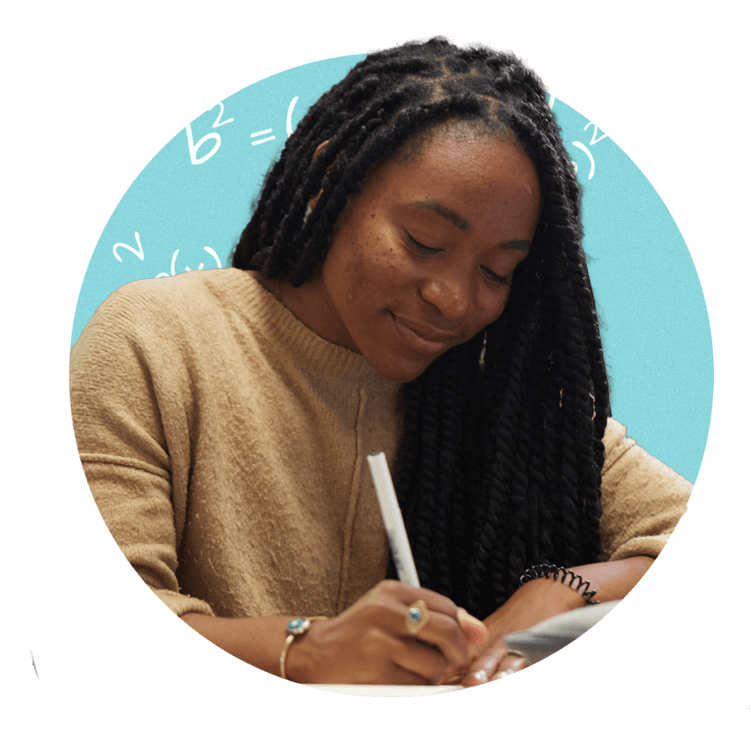
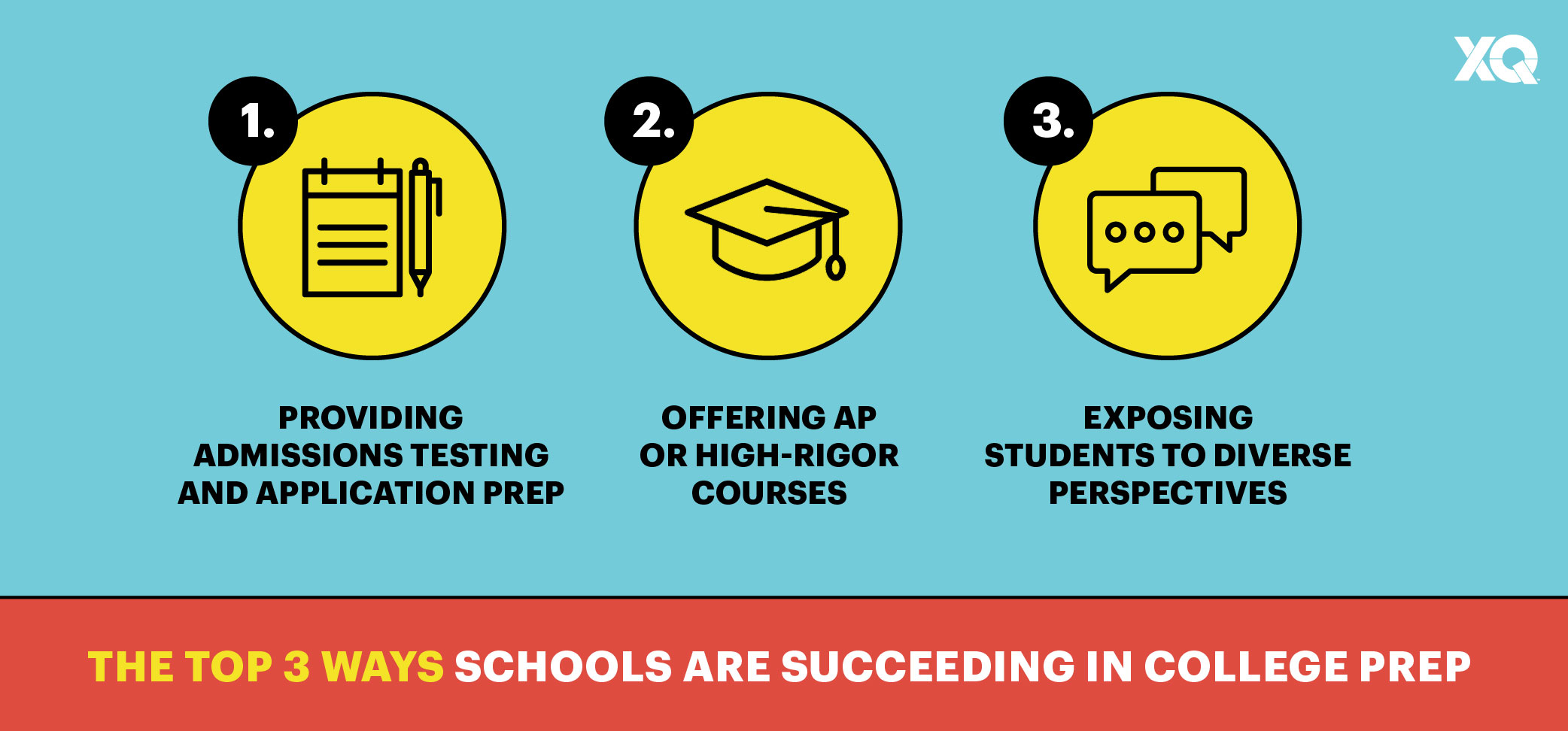
These responses reflect an understanding from our participants that to succeed in college, all students need access to quality, rigorous resources around the application process. And while respondents identified preparation for tests like the SAT/ACT as something high schools get right, at XQ, we know that the story around test prep is more complicated.
“Test prep can prepare students well for the exams—SAT, ACT— that serve as gatekeepers to college,” said Lauren Bierbaum, Head of Data, Research, and Evaluation at XQ. “But test prep does not engage high schoolers in the types of meaningful learning experiences that foster the agility of thought, knowledge, and dispositions students will need once they actually get to college. And, as many colleges move away from requiring these exams, high schools have even more opportunity to focus on meaningful, engaged learning that will truly prepare students for their academic and professional futures.”

“We know of many, many high schools where a large proportion of the students don’t even take the courses that make them eligible for college. So I think what people are saying is, we want a fair shot. We want high schools that are preparing students to be able to do college-level work and succeed.”
– Michele Cahill, Senior Advisor, XQ
Cahill has deep experience in education policy as a former vice president of national programs and urban education at the Carnegie Corporation and as a leader in developing small new high schools while she was senior counselor to the New York City Schools Chancellor. As more colleges move away from standardized tests as a metric for acceptance, Cahill said making sure all students have access to college eligibility coursework is more important than ever. She pointed to Bard Early College as an example of this.
Bard Early College is a network of eight free satellite campuses of Bard College, a nonprofit liberal arts college based in Annandale-on-Hudson, New York. In these schools, the last two years of traditional high school classes are replaced with a tuition-free immersion in college study. Across its network, approximately 75 percent of Bard Early College students are students of color, half are first-generation college students, and the majority qualify for free or reduced-price meals. Bard Early College alumni enroll in college after high school and earn four-year degrees at significantly higher rates than college-goers nationwide, especially alumni from historically excluded groups: 97 percent of students graduate with at least one year of college credit, 86 percent graduate with a BA in six years, and 68 percent receive an associate degree. This structure isn’t unique to Bard, which is one of about 400 early college high schools nationwide.
Traditional high schools can adapt parts of the early college model to serve students. Through implementing community partnerships with local colleges and universities, high schools can offer students opportunities for dual enrollment. In Michigan, Grand Rapids Public Museum School (GRPMS), an XQ school in downtown Grand Rapids, takes this approach, partnering with local higher education institutions, including Kendall College of Art and Design (KCAD). As part of this partnership, KCAD engages students, teachers, and other partners in reviewing and revising course modules and developing a teaching and learning institute. This way, the partnership helps ensure that across the board, classes at GRPMS align with the skills and knowledge students will need to succeed in college. GRPMS students can also earn credits at other local colleges. In 2022, more than half of the high school’s graduates earned college credits.
Our poll respondents also cited essay review and general help with the application process as areas where high schools are getting college preparation right. Our experts echoed the importance of this kind of college counseling and explained where high schools can do even better.

“While most high schools do provide basic information about college admissions, they don’t do as much to help students understand whether and how they can pay for college. For example, students have certainly been exposed to a ton of media coverage about student debt and ever-higher tuition rates over the past decade, which can give the impression that college is beyond their financial reach. But very few students, and in fact very few parents and guardians, understand how college pricing works today and that up-front ‘sticker prices’ are virtually meaningless.”
– Craig Jerald, XQ consultant and a former vice president for policy at the College Board
Jerald referenced 2021 data from the National Association of College and University Business Officers showing that first-time undergraduates pay only 45 percent of listed tuition, on average, at private colleges and universities—down from 55 percent in 2012-13. Individual students may also have access to various kinds of financial aid that aren’t apparent from just looking at a school’s face-value cost. Making sure students have the resources to understand these nuances in paying for college is especially relevant given how rising concerns about the cost of college may be contributing to decreases in enrollment.
One way schools can create opportunities for students to access high-quality college information is through robust college counseling. The American School Counselor Association recommends a 250:1 ratio of students to school counselors. Yet the national average for the 2020-21 academic year was 408:1, according to the U.S. Department of Education, with two-thirds of counselors working in settings where they are responsible for more than 250 students. More than half of high school counselors say managing such big caseloads is a significant challenge.
Elizabethton High School, an XQ school in Elizabethton, Tennessee, added two college and career advisors to their counseling team after students expressed a desire for more counseling resources. These counselors coordinate field trips to college fairs, informational newsletters, and campus visits. An Elizabethton 2022 graduate named Jakob said working with his college advisor “was a tremendous help, a godsend. He made sure everything was in order, made sure I wasn’t tripping over myself getting set up for college.” He said this was important because the application process was “rather foreign to me.”
For high schools that don’t have the resources to add more counselors but want to increase support, another option is building a class around college resources. At XQ school Latitude High in Oakland, California, 12th graders take a dedicated college and career class co-taught by the school’s counselor and a veteran teacher. Students also visit colleges in the region. “I always thought college was overrated, but going on those college trips really made me consider it,” a student named Daveyon told XQ.
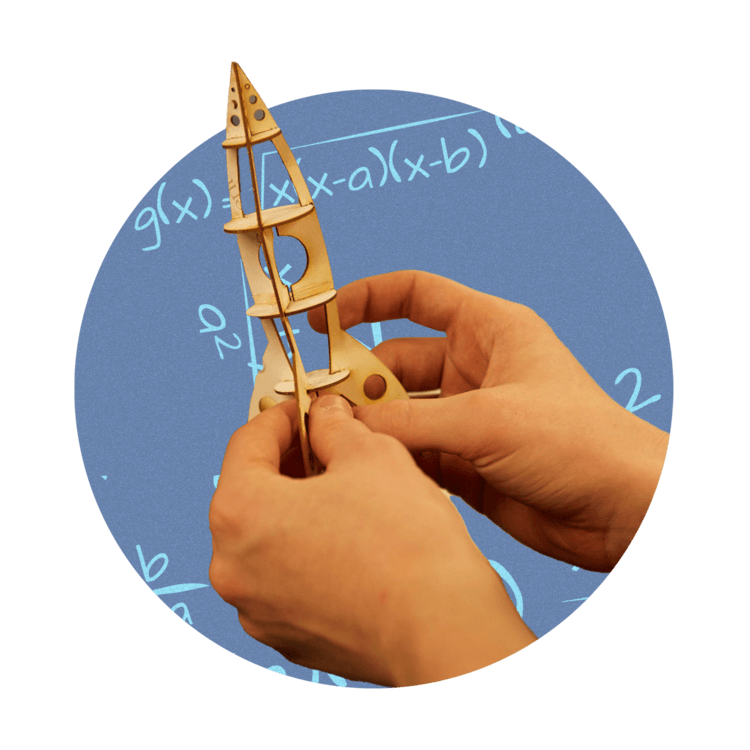
Takeaways
Our community and experts agree: high schools are not adequately preparing students for college. Too many students lack the support and information needed to navigate the complicated application process. Similarly, those students who do go to college often lack the knowledge, critical thinking, and life skills necessary to succeed once they’re there.
Improving college preparation for all students doesn’t mean prioritizing a four-year degree over other pathways. However, it does mean ensuring that all students are empowered to pursue additional education after graduating. “High schools should ensure that every student who graduates has an eligibility for post-secondary learning,” explained XQ’s Cahill. “College can mean many things. It can mean a four-year liberal arts college. It can mean a career and technical four-year degree, a career and technical two-year degree. There are many ways, but what we know is that jobs that pay the kinds of earnings that are needed to be self-supporting require postsecondary education, and they require continuous learning. And that is what high schools have to recognize.”
To better prepare students for college and other postsecondary education, schools can:
- Design learning around college-ready skills like critical thinking rather than memorization of material
- Implement project-based learning to teach students real-life skills alongside academics
- Partner with local universities to align classes with college prerequisites and offer opportunities for dual enrollment
- Ensure that all students have access to college counseling resources around various post-secondary options, as well as applying to and paying for college
At XQ, we’ve designed a series of open-source tools to help schools prepare students for the demands and challenges of college and the real world. Our research-backed Design Principles are foundational to the design of XQ schools across the country and can help school leaders rethink how to better design their school structures. We have also developed the Design Principles Rubric to help teams assess where they are in their design journey.
Likewise, the XQ Learner Outcomes are research-based and comprised of concrete, relevant knowledge and skills schools can use to support and plan student outcomes. XQ’s 37 Competencies can help educators identify the granular skills students will master as they prepare for an ever-dynamic, increasingly complex 21st century world.
To start a conversation about how to transform your school, watch these videos and check out XQ In a Box.

For more on how high schools can prepare students for college, we believe these articles are useful for students and for teachers to know more about what their students are facing.
Sign up for our newsletter
Get the latest educator insights and practical classroom tips every other week, direct from the XQ community
Follow us to #RethinkHighSchool